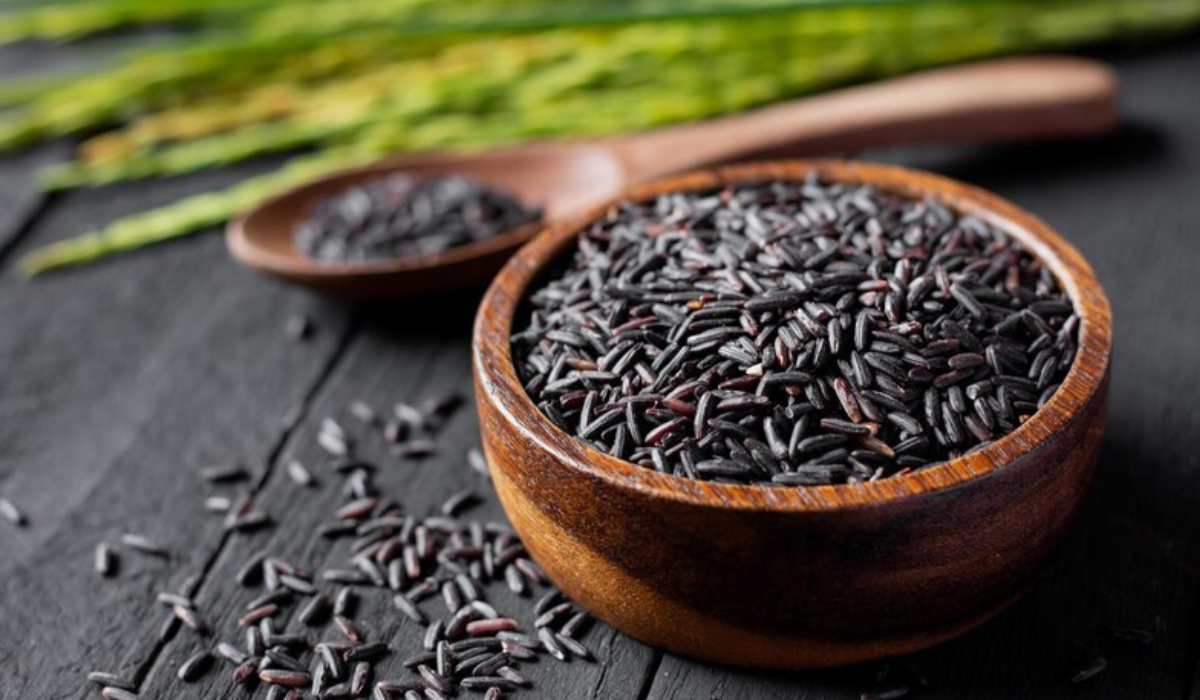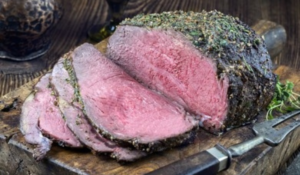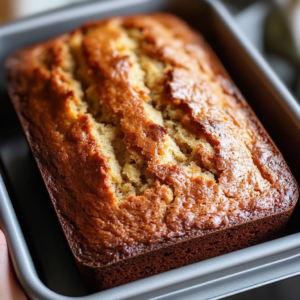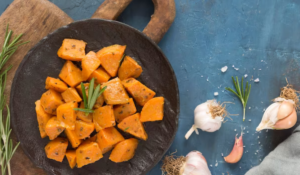Sharing is caring!
Table of Contents
ToggleIntroduction
Embarking on the journey of learning how to cook black rice opens up a world of culinary delights. This ancient grain, once reserved for royalty in China, now graces tables worldwide with its nutty flavor and impressive health benefits. Cooking black rice might seem daunting at first, but with the right guidance, it transforms into a simple and rewarding experience. This guide will take you through every step of the process, from selecting the best variety to mastering the cooking techniques that ensure a perfect dish every time. Whether you’re a seasoned chef or a curious beginner, this comprehensive guide will equip you with all the knowledge and skills needed to make black rice a staple in your kitchen.
Let’s dive into the art and science of cooking this exquisite grain, ensuring that your culinary journey with black rice is as enjoyable as it is delicious. For more insights on the history and cultural significance of black rice, visit Smithsonian Magazine.
The Origins of Black Rice
Delving into the origins of black rice reveals a fascinating journey that spans continents and cultures. Known for its deep, rich color and nutty flavor, black rice, often referred to as ‘forbidden rice’, has a storied past that adds to its allure. This intriguing grain first emerged in ancient China, where it was so highly esteemed and rare that only the emperor and his court had the privilege to enjoy it. This exclusivity led to its nickname, symbolizing its unattainability by the common people.
The cultivation of black rice began in the fertile regions of China, where it thrived under careful tending. Over centuries, its popularity and cultivation spread across Asia, particularly in countries like India, Thailand, and Indonesia. Each region embraced black rice, incorporating it into their local cuisines and cultural rituals. In these lands, black rice was more than just a food source; it was a part of their heritage, often used in traditional dishes during festivals and celebrations.
As trade routes expanded, black rice began to travel across the globe, reaching new shores and palates. Its introduction to the Western world was gradual, but it eventually gained recognition for its unique taste and health benefits. Today, black rice is no longer the forbidden fruit of the past but a sought-after ingredient in kitchens worldwide.
Understanding how to cook black rice is not just about mastering a culinary skill. It’s about connecting with a rich history that spans thousands of years and countless miles. As you prepare and savor black rice, you partake in a legacy that has been passed down through generations, a legacy that continues to evolve and enchant with each grain cooked and shared.
Types of Black Rice
When you explore how to cook black rice, you’ll quickly discover that this intriguing grain comes in several distinct varieties, each with its unique characteristics and culinary uses. Understanding these types can enhance your cooking experience, allowing you to choose the best variety for your specific dish.
- Chinese Forbidden Rice: Perhaps the most famous type, Forbidden Rice, has a rich history in ancient China. It boasts a deep purple hue when cooked and offers a nutty flavor with a slightly sticky texture. This variety works wonderfully in both savory and sweet dishes.
- Thai Jasmine Black Rice: This variety, also known as Thai black sticky rice, is native to Thailand. It’s known for its sweet aroma, similar to that of jasmine rice, and its softer, stickier texture when cooked. It’s a staple in many Thai desserts, often paired with coconut milk.
- Italian Venere Black Rice: Originating from Italy, Venere black rice is known for its aromatic, slightly earthy flavor. It has a firm texture and takes a bit longer to cook. This variety is excellent for salads and side dishes, as it holds its shape well and adds a unique visual and taste appeal.
- Indonesian Black Rice: Often used in traditional Indonesian desserts, this variety has a slightly sweet flavor and a chewy texture. It’s perfect for making rice pudding and other sweet treats.
Each type of black rice brings its unique flavor and texture to the table. When learning how to cook black rice, consider the specific characteristics of these varieties to enhance your dishes. Whether you’re aiming for a creamy pudding, a fragrant side dish, or a hearty salad, there’s a type of black rice that will perfectly suit your culinary creation.
Nutritional Profile
Understanding the nutritional profile of black rice is essential when exploring how to cook black rice and incorporate it into a healthy diet. This ancient grain, often overshadowed by more common rice varieties, is a nutritional powerhouse that offers a wealth of benefits.
Firstly, black rice is rich in antioxidants, particularly anthocyanin, which gives it its distinctive black-purple color. These antioxidants are known for their anti-inflammatory properties and their role in protecting against heart disease and certain cancers.
In terms of dietary fiber, black rice is a champion. It contains more fiber than its white and brown counterparts, aiding in digestion and providing a feeling of fullness, which can be beneficial for weight management. This high fiber content also contributes to better blood sugar control, making it a suitable option for those managing diabetes.
Protein is another key component of black rice’s nutritional profile. It offers a higher protein content compared to many other rice varieties, making it a valuable food choice for vegetarians and vegans looking to boost their protein intake.
Moreover, black rice is a good source of several essential minerals, including iron and magnesium. Iron is crucial for maintaining healthy blood, while magnesium plays a vital role in muscle and nerve function, as well as maintaining a healthy immune system.
When you learn how to cook black rice, you’re not just adding a new recipe to your repertoire; you’re embracing a grain that can significantly contribute to a balanced and nutritious diet. Its unique flavor, coupled with its health benefits, makes black rice an excellent choice for anyone looking to diversify their grain intake and explore new culinary horizons.
Preparing to Cook Black Rice
Before you dive into learning how to cook black rice, proper preparation is key to ensuring the best results. This unique grain requires a bit more attention than your typical white or brown rice, but the extra steps are well worth the effort for its delicious and nutritious outcome.
Firstly, selecting high-quality black rice is crucial. Look for grains that are whole and unbroken, with a deep black color. This ensures that you’re starting with the best raw material for your dish.
Once you have your rice, rinsing it thoroughly is the next crucial step. Run cold water over the rice until it runs clear. This process helps to remove any excess starch on the surface, which can cause the rice to be overly sticky or clump together when cooked.
Soaking the rice is another important step in the preparation process. Soak the black rice in water for at least 30 minutes, or even longer if time allows. Soaking helps to soften the grains, leading to a more uniform texture upon cooking and reducing the overall cooking time.
Gathering the right cooking tools is also essential. You’ll need a pot with a tight-fitting lid or a rice cooker if you prefer. The tight lid is crucial for maintaining the steam and heat inside the pot, which is necessary for evenly cooking the rice.
Lastly, measure out the water you’ll need for cooking. Black rice generally requires more water than white rice. A good rule of thumb is to use about 1¾ to 2 cups of water for every cup of black rice.
With these preparation steps in place, you’re well on your way to mastering how to cook black rice. This initial effort sets the stage for a successful cooking process, ensuring that your black rice will be perfectly cooked and ready to be enjoyed in a variety of dishes.
How to Cook Black Rice
Mastering how to cook black rice is a simple yet rewarding culinary skill. This nutrient-rich grain, with its deep color and nutty flavor, can elevate any meal. Here’s a straightforward method to get perfectly cooked black rice every time.
- Start with Pre-soaked Rice: Begin with black rice that you’ve soaked for at least 30 minutes. This step is crucial for softening the grains and ensuring even cooking.
- Use the Right Water Ratio: For every cup of black rice, use about 1¾ to 2 cups of water. This ratio is key to achieving the right texture – not too dry and not too mushy.
- Cooking on the Stove: Transfer the soaked rice into a pot and add the measured water. Bring it to a boil over high heat. Once boiling, reduce the heat to low, cover the pot with a tight-fitting lid, and let it simmer. The rice should cook for about 30-35 minutes, but start checking it after 30 minutes to prevent overcooking.
- Check for Doneness: The rice is done when it’s tender and all the water has been absorbed. If the rice is still too hard, you can add a little more water and continue cooking for a few more minutes.
- Let it Rest: After turning off the heat, let the rice sit covered for about 10 minutes. This resting period allows the grains to firm up and ensures that your black rice doesn’t become mushy.
- Fluff and Serve: Use a fork to gently fluff the rice before serving. This helps to separate the grains and release any excess steam.
Remember, patience is key when learning how to cook black rice. Unlike white rice, it takes longer to cook, but the wait is definitely worth it. Once you’ve mastered this basic cooking method, you can start experimenting with different flavors and ingredients to make your black rice dishes even more exciting.
Cooking Methods for Black Rice
When you explore how to cook black rice, you’ll find that this versatile grain adapts well to various cooking methods. Each technique offers a unique texture and flavor, allowing you to tailor your dish to your specific taste and needs.
- Stovetop Method: This traditional approach is straightforward. After soaking, add one part rice to two parts water in a pot. Bring it to a boil, then reduce the heat to a simmer, cover, and cook for about 30-35 minutes. Check the rice for doneness; it should be tender and all the water absorbed. Let it rest for 10 minutes before fluffing with a fork.
- Rice Cooker Method: For a hands-off approach, use a rice cooker. Follow the same water-to-rice ratio. The rice cooker will handle the cooking process and switch to ‘keep warm’ once the rice is done. This method is perfect for those who prefer convenience and consistent results.
- Oven-Baked Method: Preheat your oven to 375°F (190°C). Place the soaked rice and water in an oven-safe dish. Cover it with a tight lid or foil and bake for about 1 hour. The rice absorbs the water slowly, resulting in a chewy texture.
- Pressure Cooker Method: If you’re short on time, a pressure cooker can be a lifesaver. Use the same ratio of rice to water. Cook on high pressure for 22-25 minutes, then let the pressure release naturally. This method significantly cuts down the cooking time.
Each of these methods has its own merits, and the choice often depends on your time constraints and the desired texture of the rice. Experimenting with different methods is a great way to discover your personal preference when learning how to cook black rice. Regardless of the method you choose, you’ll end up with a delicious, nutritious dish that’s sure to impress.
Water-to-Rice Ratio for Cooking Black Rice
Getting the water-to-rice ratio right is crucial when you’re learning how to cook black rice. This ratio can make or break the texture of your final dish, so it’s important to measure accurately for the best results.
For black rice, the ideal ratio tends to be more water than what you might use for white or brown rice. Generally, you’ll want to use about 1¾ to 2 cups of water for every cup of black rice. This higher water ratio accounts for the firmer texture of black rice and its longer cooking time.
Here’s a quick guide to help you:
- Stovetop Cooking: If you’re cooking black rice on the stove, lean towards using 2 cups of water per cup of rice. This ensures the rice has enough moisture to become tender without becoming mushy.
- Rice Cooker: When using a rice cooker, a 1¾ to 1 ratio of water to rice works well. Rice cookers are designed to efficiently manage moisture, so you can use slightly less water.
- Oven Baking: For oven-baked black rice, stick with a 2 to 1 water-to-rice ratio. The oven’s dry heat means the rice needs more water to prevent it from drying out.
- Pressure Cooking: In a pressure cooker, a 1¾ to 1 ratio is sufficient since the sealed environment retains more moisture.
Remember, these ratios are starting points. Depending on the specific type of black rice you’re using and your cooking method, you might need to adjust slightly. It’s always a good idea to check the rice towards the end of cooking. If it seems too dry, you can add a bit more water. With practice, you’ll find the perfect balance for how to cook black rice to suit your taste and texture preferences.
Cooking Time for Black Rice
When you’re mastering how to cook black rice, understanding the cooking time is key to achieving the perfect texture. Black rice generally takes longer to cook than white or brown rice due to its denser texture and outer bran layer.
Here’s a breakdown of cooking times based on different methods:
- Stovetop Cooking: After bringing the rice to a boil, reduce the heat to a simmer and let it cook for about 30-35 minutes. The rice should be tender and all the water absorbed. If it’s still too firm, you can cook it for an additional 5-10 minutes, checking frequently.
- Rice Cooker: In a rice cooker, black rice usually takes about 30-40 minutes. However, this can vary depending on the cooker. It’s best to check the rice after 30 minutes and adjust the time as needed.
- Oven Baking: Baking black rice in the oven typically takes about 1 hour. Check the rice at the 50-minute mark to assess its texture and moisture level.
- Pressure Cooking: A pressure cooker significantly reduces the cooking time for black rice. Set your cooker for 22-25 minutes on high pressure, followed by a natural release of pressure. This method is ideal if you’re short on time.
Remember, these times are approximate and can vary based on the specific type of black rice you’re using and your cooking appliance. It’s always a good idea to start checking the rice a bit earlier than the suggested time, especially if you’re trying a new cooking method. With practice, you’ll get a feel for the perfect cooking time to make your black rice just right.
Flavor Enhancements for Black Rice
As you learn how to cook black rice, experimenting with various flavor enhancements can elevate this already delicious grain to new culinary heights. Black rice, with its naturally nutty and slightly sweet taste, pairs wonderfully with a range of flavors, from bold spices to subtle herbs.
- Herbs and Spices: Fresh herbs like cilantro, parsley, or basil add a refreshing touch to the earthy flavor of black rice. For a warmer, spicier kick, consider incorporating spices such as cumin, coriander, or even a pinch of cinnamon. These spices can be added during the cooking process to infuse the rice with their flavors.
- Citrus Zest: The zest of lemon, lime, or orange can bring a bright, zesty note to black rice. It’s best to stir in the zest after the rice is cooked to preserve the delicate oils and fresh flavor of the citrus.
- Sautéed Garlic or Onion: Sautéing garlic or onion before adding the rice and water can add a savory depth to the dish. The caramelization of these aromatics releases sweet and earthy flavors that complement black rice beautifully.
- Broth Instead of Water: For an extra layer of flavor, cook your black rice in vegetable or chicken broth instead of water. This simple swap can make a significant difference in the overall taste of your dish.
- Coconut Milk: For a creamy, tropical twist, use coconut milk as part of the cooking liquid. This works especially well for dishes where a slightly sweet and rich flavor profile is desired.
- Toasted Nuts or Seeds: Adding toasted nuts or seeds, like almonds, pecans, or sesame seeds, provides a delightful crunch and nuttiness that pairs perfectly with the texture of black rice.
By exploring these flavor enhancements, you can tailor your black rice dishes to suit any palate or cuisine. Each addition offers a unique way to complement the distinct taste of black rice, making every meal an exciting culinary adventure.
Serving Suggestions for Black Rice
Once you’ve mastered how to cook black rice, the next exciting step is serving it in ways that showcase its unique flavor and texture. Black rice, with its striking color and nutty taste, can be a star on its own or a stunning complement to a variety of dishes.
- As a Base for Bowls: Use black rice as the foundation for grain bowls. Top it with your choice of proteins, vegetables, and a flavorful sauce for a nutritious and visually appealing meal.
- Side Dish: Serve black rice as a side dish to accompany meats, fish, or vegetables. Its rich color contrasts beautifully with vibrant greens, bright oranges, and other colorful veggies, making for an eye-catching plate.
- In Salads: Cool and toss cooked black rice into salads. It pairs well with crunchy vegetables, nuts, and a tangy dressing, adding a hearty element to any salad.
- Stuffed Vegetables: Use black rice as a filling for stuffed peppers, tomatoes, or zucchini. Its firm texture and savory flavor complement the softness and mild taste of the vegetables.
- In Soups and Stews: Add cooked black rice to soups and stews for extra texture and flavor. It holds up well in broths and adds a satisfying, chewy component to your soups.
- As a Dessert: Surprisingly, black rice also works well in sweet dishes. Try making a black rice pudding, sweetened with coconut milk and topped with fresh fruit or a sprinkle of cinnamon.
- With Curries and Stir-fries: Serve black rice alongside curries or stir-fried dishes. Its ability to absorb flavors makes it a perfect accompaniment to these rich, saucy dishes.
By incorporating black rice into your meals with these serving suggestions, you not only enjoy its health benefits but also add a gourmet touch to your dining table. Each serving method brings out a different aspect of black rice, making it a versatile ingredient in your cooking repertoire.
Creative Recipes with Black Rice
Once you’ve got the hang of how to cook black rice, you can start getting creative in the kitchen with some unique recipes. This versatile grain can be the star in a variety of dishes, from hearty mains to exotic desserts.
- Black Rice and Mango Salad: Combine cooled black rice with diced mango, sliced avocado, chopped cilantro, and red bell pepper. Dress it with a mix of lime juice, honey, and a dash of olive oil for a refreshing and colorful salad.
- Black Rice Sushi Rolls: Give your sushi rolls a twist by using black rice. Pair it with fillings like smoked salmon, cucumber, and cream cheese. The black rice adds a nutty flavor and makes the sushi visually striking.
- Black Rice Risotto: Cook black rice in a mixture of vegetable broth and white wine, stirring continuously. Add sautéed mushrooms, a sprinkle of Parmesan cheese, and a touch of truffle oil for a luxurious, creamy risotto.
- Spicy Black Rice and Beans: For a simple yet flavorful dish, mix cooked black rice with black beans, corn, diced tomatoes, and a blend of cumin, chili powder, and garlic. Top with fresh cilantro and a squeeze of lime juice.
- Black Rice Porridge: For a warm breakfast, cook black rice in almond milk with a cinnamon stick. Sweeten with maple syrup and top with your choice of nuts and fresh berries.
- Stuffed Squash with Black Rice: Hollow out acorn squash and fill it with a mixture of black rice, sautéed kale, cranberries, and walnuts. Roast until the squash is tender and serve as a stunning main dish.
These creative recipes showcase the versatility of black rice in your cooking. Whether you’re looking for something savory or sweet, black rice can adapt to various flavors and cuisines, making your meals both nutritious and exciting.
Buying Guide for Black Rice
When you’re keen on learning how to cook black rice, the first step is purchasing the right kind. Here’s a quick guide to help you make an informed choice when buying black rice.
- Check the Label: Look for labels that say ‘whole grain black rice’ to ensure you’re getting the real deal. Avoid mixes that may contain only a small percentage of black rice.
- Organic Options: Consider organic black rice if you prefer foods grown without synthetic pesticides and fertilizers. Organic black rice often has a more robust flavor and nutritional profile.
- Look for Freshness: Freshness is key for flavor and nutritional value. Check the packaging date. Fresher rice means better taste and texture.
- Variety Matters: Remember, there are different varieties of black rice, like Forbidden, Thai Jasmine, and Indonesian. Each has its unique flavor and texture, so think about the dishes you want to make.
- Bulk Buying: If you plan to use black rice regularly, buying in bulk can be cost-effective. Just ensure you have proper storage to keep it fresh.
- Specialty Stores and Online: While black rice is becoming more common in supermarkets, specialty health food stores or Asian markets often have a better selection. Online stores are also a great option to find high-quality black rice.
- Price Point: Black rice tends to be pricier than white or brown rice, but its nutritional benefits and unique flavor justify the cost. Don’t shy away from a higher price tag for good quality.
By keeping these points in mind, you can select the best black rice for your cooking needs. Whether you’re making a simple side dish or an elaborate main course, starting with high-quality black rice is the first step to a delicious and healthy meal.
Frequently Asked Questions
- What is the best way to cook black rice to retain its nutrients? To retain the maximum nutrients in black rice, opt for cooking methods that require less water, like steaming or pressure cooking. These methods prevent the loss of water-soluble nutrients.
- Can black rice be cooked in a rice cooker? Absolutely! Black rice can be cooked in a rice cooker. Use a water-to-rice ratio of about 1¾ to 1, and expect a slightly longer cooking time compared to white rice.
- How long should I soak black rice before cooking? Soaking black rice for at least 30 minutes to an hour before cooking is ideal. This process softens the grains and reduces the overall cooking time.
- Is black rice gluten-free? Yes, black rice is naturally gluten-free, making it a great option for those with gluten sensitivities or celiac disease.
- Can I use black rice as a substitute for white rice in recipes? Yes, you can substitute black rice for white rice in most recipes. However, expect a nuttier flavor and chewier texture, along with a longer cooking time.
- How do I store cooked black rice, and how long does it last? Store cooked black rice in an airtight container in the refrigerator. It should last for up to 5-7 days. You can also freeze it for longer storage.
By addressing these common queries, you can enhance your experience and confidence in cooking and enjoying black rice, making it a delightful addition to your culinary repertoire.
Conclusion
Mastering how to cook black rice is a journey that opens up a world of culinary possibilities. This ancient grain, with its deep, rich color and nutty flavor, not only adds a unique touch to your meals but also brings a host of nutritional benefits. From selecting the right variety to experimenting with different cooking methods and flavor enhancements, each step in the process of cooking black rice is an opportunity to explore and enjoy this versatile ingredient. Whether you’re using it as a base for a vibrant salad, a hearty addition to soups and stews, or even as a key component in a sweet dessert, black rice is sure to impress.
Remember, the key to perfect black rice lies in the water-to-rice ratio, the cooking time, and the method you choose based on your texture preference and time constraints. As you become more familiar with black rice, don’t hesitate to get creative with it – this grain is incredibly adaptable to a variety of cuisines and flavors.
Incorporating black rice into your diet is not just about enjoying its delicious taste; it’s also about embracing a healthier, more wholesome way of eating. So, the next time you’re looking for a nutritious grain to spice up your meal, think of black rice – a simple yet exotic ingredient that can transform your cooking and delight your palate.







3 thoughts on “How to Cook Black Rice: Your Ultimate Guide”
Comments are closed.